 Water is the strongest element of nature. It may seem as though we have plenty by looking into the ocean, rivers and lakes but in fact each year our water supply decreases due to not enough rainfall. We ourselves can help with wastage of water.
Water is the strongest element of nature. It may seem as though we have plenty by looking into the ocean, rivers and lakes but in fact each year our water supply decreases due to not enough rainfall. We ourselves can help with wastage of water.
Here are 10 simple ways you can save water around the home;
- Firstly instead of watering down a driveway or sidewalk use a broom to remove all leaves and debris.
- Water your gardens in the early hours of the day or even late at night. This will reduce the amounts of evaporation that occurs.
- Use a specific nozzle on the hose that will switch off when water begins to leak.
- Try not to use a large amount of fertilizer on the lawn. Fertilizing requires loads of watering on a daily basis.
- Try to only water the grass every 4 to 7 days in the warmer months and 9 to 14 days during the colder months. This is all that is recommended.
- If you have water feature in your landscaped garden try to use a water system that recycles the same water. By doing this you are saving bucket loads of water.
- If you have a swimming pool in your yard consult your nearest pool retailer on purchasing a water saving pump.
- Never leave a sprinkler unattended. You may forget that it is switched on and let it run for hours. Sprinklers can waste gallons of water in a minimal amount of time.
- Try and plant flowers that do not require regular water.
- Use mulch that will retain moisture in the soil, saving you the hassle of watering it all the time.
Landscaping and Water
 Landscapes main source of life is water. Landscapes thrive and survive off water. Without water there’d be no way flowers, trees, plants and grass would survive especially in high temperature areas.
Landscapes main source of life is water. Landscapes thrive and survive off water. Without water there’d be no way flowers, trees, plants and grass would survive especially in high temperature areas.
The amount of water you feed your landscaping will depend on;
- How large the area is.
- Which type of grass you have.
- What type of flowers and plants you have.
- What type of lawn maintenance is needed?
Standing in your landscaped garden with a hose watering your plants can take up to hours when doing both the front and back areas. You will also be wasting a lot of water that could be used sensibly some where else.
Why Not Install Your Own Irrigation System?
An irrigation systems installed in your residential home will help with the maintenance of you wonderfully landscaped gardens. There are several types of irrigation systems.
Drip Irrigation System
 This type of system is more suited to residential properties with smaller yards and landscaped gardens. Drip irrigation is suited for the watering of plants, flowers, trees and shrubs. They can b e installed right at the roots of the plants and flowers. Drip irrigations water flow is slow and drip like. It delivers the right amount of water daily, weekly or monthly without the wastage.
This type of system is more suited to residential properties with smaller yards and landscaped gardens. Drip irrigation is suited for the watering of plants, flowers, trees and shrubs. They can b e installed right at the roots of the plants and flowers. Drip irrigations water flow is slow and drip like. It delivers the right amount of water daily, weekly or monthly without the wastage.
A drip irrigation system is easily installed just below the surface of the ground. Small trenches need to be dug out to insure that the system in secure. They can be set by a timer giving you the opportunity to have the gardens watered when you please.
Choosing the Right Irrigation System
Choosing the right irrigation system for your home or farm can be a tough choice. It is an important decision so of course you need to research the many different types of irrigation systems to find out which will best suit your needs. There are many components which make up an irrigation system, things like;
- Sprinklers
- Panels
- Taps
- PVC tape
- Pipe’s
- Pumps
 Irrigation systems do not come assembled ready for installation. You can choose which type of components you would like to include in your system that will help you save water (most importantly), time and money.
Irrigation systems do not come assembled ready for installation. You can choose which type of components you would like to include in your system that will help you save water (most importantly), time and money.
Hopefully this information we have provided you with is helpful. So visit your local retailer who specialises in landscape irrigation systems and you too can help save water!

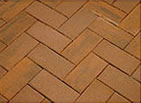


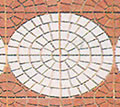






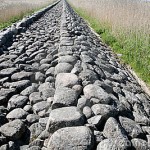
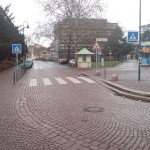
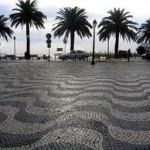
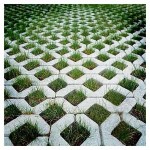
 Walkways can be situated anywhere around the home. A walkway can lead to the entrance of your home, the landscaped area, the patio and the pool area. A pavement material that is used on a walkway also needs to be durable, strong, flexible and weather resistant. Interlocking concrete pavers offer all of the above.
Walkways can be situated anywhere around the home. A walkway can lead to the entrance of your home, the landscaped area, the patio and the pool area. A pavement material that is used on a walkway also needs to be durable, strong, flexible and weather resistant. Interlocking concrete pavers offer all of the above. A patio is a place where you, family and friends can gather to enjoy a nice meal, barbeque or just a simple get together. Many people have lovely furniture and landscape ornaments placed in the area of their patio. Interlocking concrete pavers are the perfect choice for the flooring on a patio. They will not be scratched by the movement of furniture or ornaments. They are available in many exclusive colors which can add beauty and compliment you furniture.
A patio is a place where you, family and friends can gather to enjoy a nice meal, barbeque or just a simple get together. Many people have lovely furniture and landscape ornaments placed in the area of their patio. Interlocking concrete pavers are the perfect choice for the flooring on a patio. They will not be scratched by the movement of furniture or ornaments. They are available in many exclusive colors which can add beauty and compliment you furniture. Interlocking concrete pavers are an ideal application for you pool surrounding. They can be made to any color, shape and size you may require. Interlocking concrete pavers are water resistant and slip resistant which is required by law nowadays for any type of pavement used around pools.
Interlocking concrete pavers are an ideal application for you pool surrounding. They can be made to any color, shape and size you may require. Interlocking concrete pavers are water resistant and slip resistant which is required by law nowadays for any type of pavement used around pools. The maintenance of interlocking concrete pavers is very low. Occasionally you may be required to replace a chipped or cracked paver which is very rare due to their durability. The darker colored types are ideal for driveways where oil stains may occur because they will hide the stain. There are special types of cleaning solutions that can be used to remove heavy stains such as;
The maintenance of interlocking concrete pavers is very low. Occasionally you may be required to replace a chipped or cracked paver which is very rare due to their durability. The darker colored types are ideal for driveways where oil stains may occur because they will hide the stain. There are special types of cleaning solutions that can be used to remove heavy stains such as; As you can see, Interlocking Concrete Pavers have so many benefits, which is what makes them such a popular choice not only for homeowners, but also for designers, architects and contractors!
As you can see, Interlocking Concrete Pavers have so many benefits, which is what makes them such a popular choice not only for homeowners, but also for designers, architects and contractors!